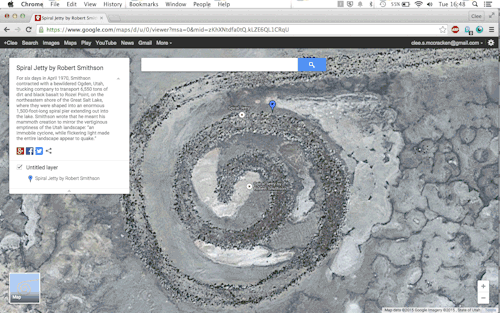
Summer, the most idyllic of times for the beloved cross-country American ramble, is drawing to a close. But if you’re itching for one last hurrah, take a page from my book and head to exotic Utah.
Whist roaming through the desert this summer, I (serendipitously) stumbled upon one of the biggest and best-known earthwork sculptures: Robert Smithson’s Spiral Jetty.
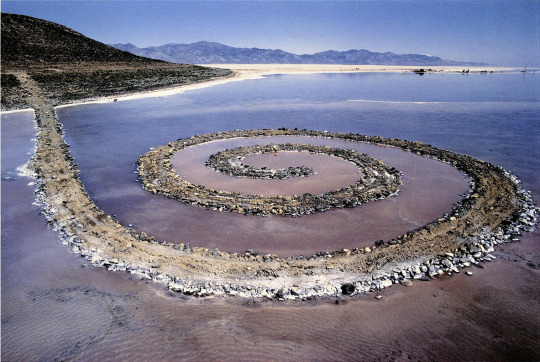
Having completely forgotten that Spiral Jetty sits on the northeastern shore of the Great Salt Lake, I was luckily able to make an easy peasy detour to see the site on my planned route from SLC up to Yosemite. Once you turn out towards Rozel Point (the site of the sculpture), the journey becomes a rough-and-tumble trek down a winding dirt road, demanding some judgement calls in opposition to questionable GoogleMaps instructions. There’s minimal signage, and you’re gonna think that you’ve made a wrong turn and that you’ll never find this thing. However, stick to what you’ll probably be able to discern as the “main road,” and you’ll eventually find yourself in a small parking lot. You’ll hop out of your car, walk to the edge of the lot, and definitely make this face:
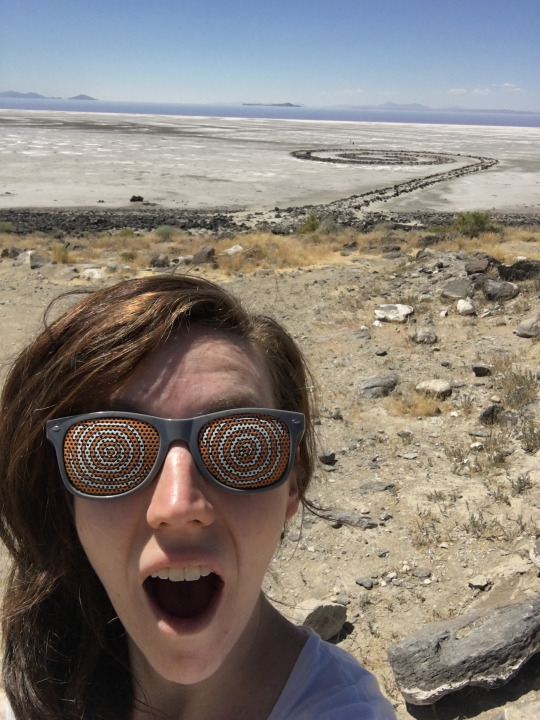
Minus my face:
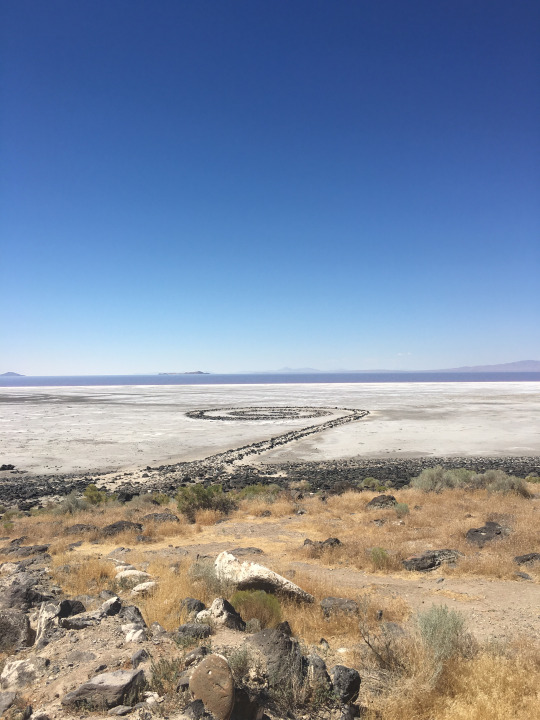
Compared to other pictures of Spiral Jetty, you’ll notice how low the lake appears here. While the sculpture actually became fully submerged not long after it was built, and for some time was best visible by fly-over, the waters have now receded so much that you can easily stroll into the spiral itself. Take care, though–while the power of entropy was of major interest to Smithson, he trusted in the jetty’s ability to stand up to the elements and be more or less permanent. He didn’t necessarily account for visitors clamboring over the work in times of extreme drought (or grabbing pieces of the jetty to make their own tiny replicas nearby, an actual occurrence out there). Enough of this kind of treatment over time could really do some damage and give conservationists some grey hairs, so tread lightly!
So, if the water’s low and you’re taking a stroll, venture out past the jetty to the lake’s edge. On your way, you may find some curiosities. Perhaps some strange, salty slush puddles. Perhaps some mysterious crystalised animal carcases. Perhaps you’ll walk far enough to see the salt-encrusted remains of a decaying pier.
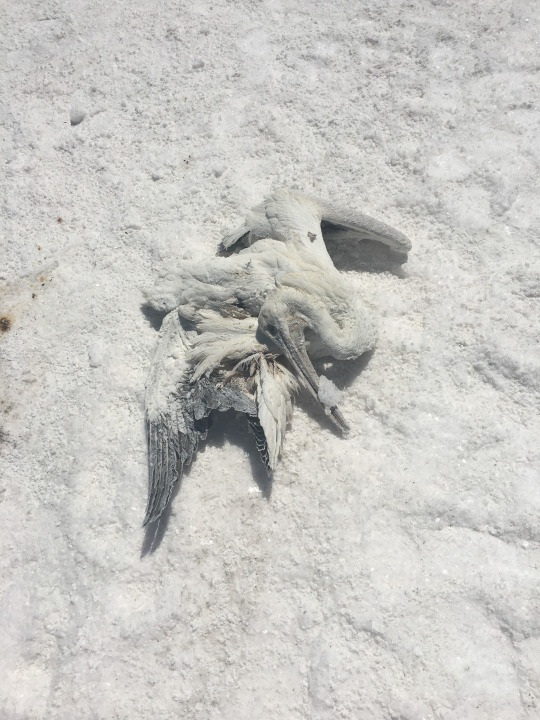
In fact, these echoes of long forgotten industry are what initially lured Smithson to use the Great Salt Lake as Spiral Jetty’s site. He described the landscape as “evidence of a succession of man-made systems mired in abandoned hopes,“ already illustrative of the ability of time and nature to degrade and alter. Enjoy contemplating that.
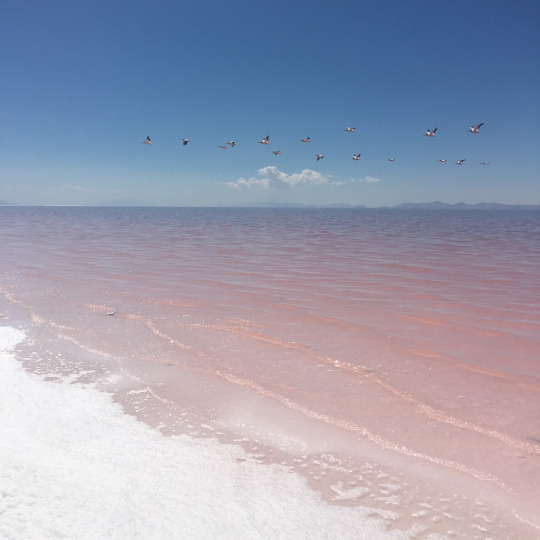
Walk all the way up to the fluffy heaps of salt foam pushed up on cracked earth by lapping pink waves, dyed bright from algae and brine shrimp. Look out to the horizon, where purple sea meets hazy sky. Listen to silence. Welcome to Mars.
If you’re itching for more art experiences in the great outdoors check out these artworks.
By: Anna McNeary
Sources
- http://www.robertsmithson.com/essays/sanford.htm
- Sanford, Melissa. The Salt of the Earth. January 13, 2004. http://www.robertsmithson.com/essays/sanford.htm
- Kimmelman, Michael. Sculpture From the Earth, But Never Limited by It. New York Times. June 24, 2005.









